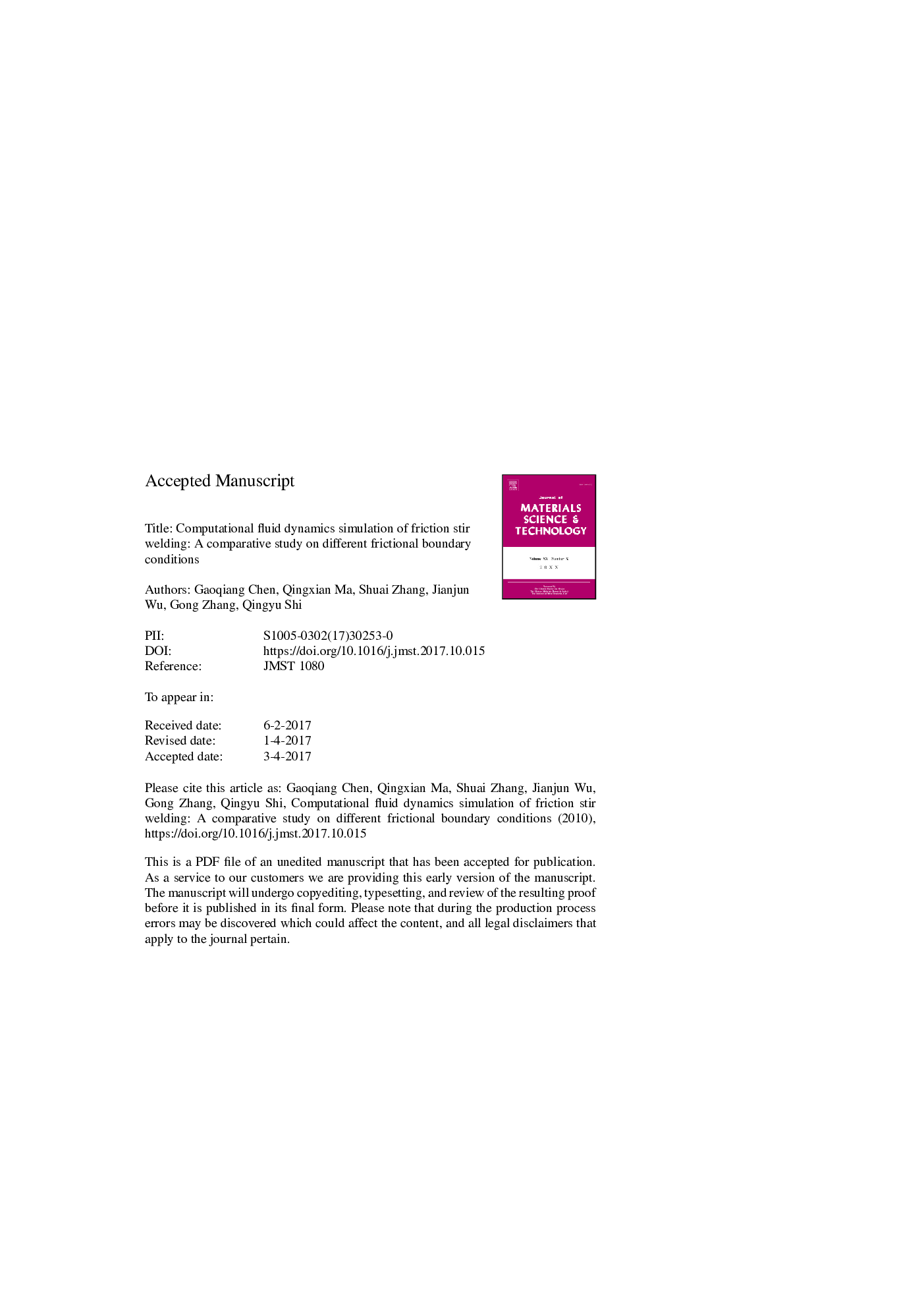| Article ID | Journal | Published Year | Pages | File Type |
|---|---|---|---|---|
| 7952101 | Journal of Materials Science & Technology | 2018 | 20 Pages |
Abstract
Numerical simulation based on computational fluid dynamics (CFD) is a useful approach for quantitatively investigating the underlying thermal-mechanical conditions during FSW, such as temperature field and material deformation field. One of the critical issues in CFD simulation of FSW is the use of the frictional boundary condition, which represents the friction between the welding tool and the workpiece in the numerical models. In this study, three-dimensional numerical simulation is conducted to analyze the heat transfer and plastic deformation behaviors during the FSW of AA2024. For comparison purposes, both the boundary velocity (BV) models and the boundary shear stress (BSS) models are employed in order to assess their performances in predicting the temperature and material deformation in FSW. It is interesting to note that different boundary conditions yield similar predictions on temperature, but quite different predictions on material deformation. The numerical predictions are compared with the experimental results. The predicted deformation zone geometry by the BSS model is consistent with the experimental results while there is large difference between the predictions by the BV models and the experimental measurements. The fact that the BSS model yields more reasonable predictions on the deformation zone geometry is attributed to its capacity to automatically adjust the contact state at the tool/workpiece interface. Based on the favorable predictions on both the temperature field and the material deformation field, the BSS model is suggested to have a better performance in numerical simulation of FSW than the BV model.
Related Topics
Physical Sciences and Engineering
Materials Science
Materials Chemistry
Authors
Gaoqiang Chen, Qingxian Ma, Shuai Zhang, Jianjun Wu, Gong Zhang, Qingyu Shi,
